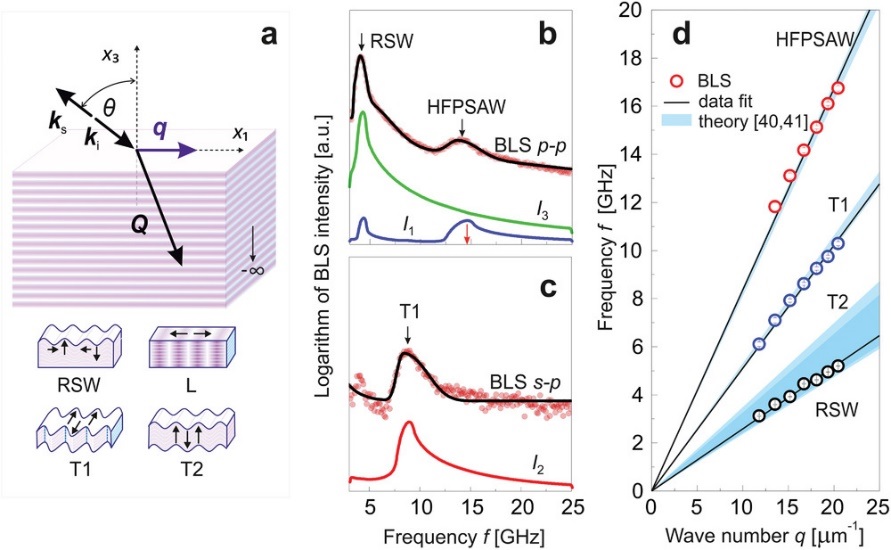Elastic Evaluation of Non-transparent Materials
Surface Acoustic Waves (SAWs) - speed of sound of SAWs (Rayleigh, Sezawa, Love, Lamb, and pseudo-SAWs) of metals, semiconductors, or metal-coated transparent solids as a function of propagation angle (angular anisotropy) and temperature (from -190°C to 250°C). Furthermore, based on BLS data, Young modulus and elastic tensor can be determined.

References:
Thickness-Dependent Elastic Softening of Few-Layer Free-Standing MoSe2, V. Babacic et al. Advanced Materials 33 (23), 2008614 (2021),
Surface acoustic waves and elastic constants of Cu14%Al4%Ni shape memory alloys studied by Brillouin light scattering, B. Graczykowski et al. J. Phys. D: Appl. Phys. 44 455307 (2011).